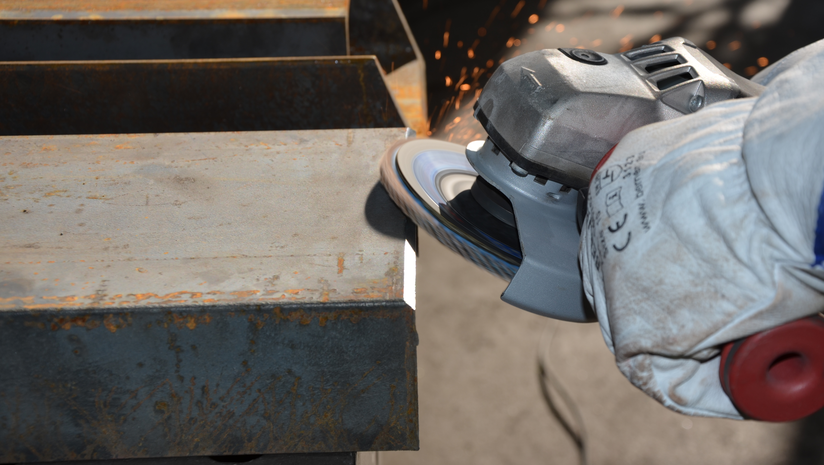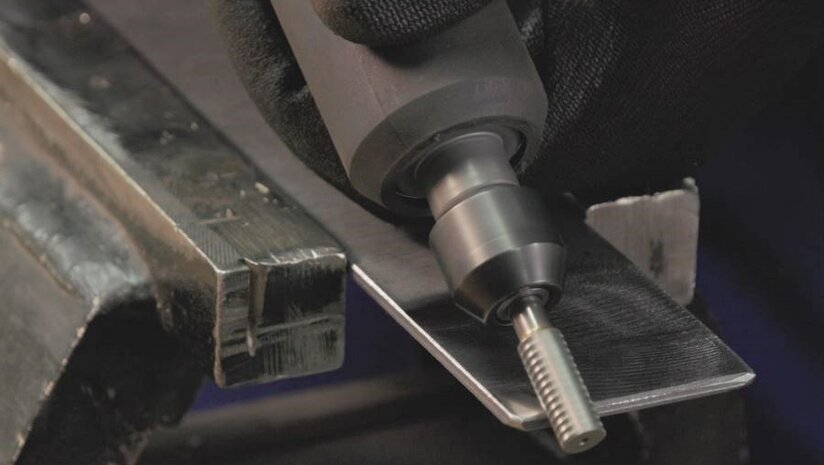
Beveling
If two workpieces are to be welded together, the edge of the workpieces must first be broken by a beveled surface. This is done by machining. The result is a chamfer, also known as a bevel.
What is beveling and
why is it important?
If two workpieces are to be welded together, the edge of the workpieces must first be broken by a beveled surface. This is done by machining. Or in other words, a space is created to accommodate the individual welding layers through which the workpieces are joined together. The bevel can have different shapes. The V-joint, the double V-joint, and the Y-joint are the most common shapes.
Which tool is used for beveling?
The position of the weld, the material of the workpiece, and the types of drives available - the choice of the right tool depends on various factors.
If an angle grinder is available, the beveling can be done with sulfur- and iron-free Osborn flap discs. Flap discs with a conical or straight shape are available. The angle on the workpiece determines the shape of the flap wheel.
If a workpiece made of non-ferrous metal is to be beveled, we recommend an abrasive cloth with a cooling bond as it reduces blue tarnish.

Pictured: Beveling with an Osborn flap disc.
If a straight grinder or air grinder is available, chamfering can be done with carbide burrs. The milling head is made of tungsten carbide-cobalt, the shank of tool steel. Different head shapes and toothings ensure that there is the right solution for every application.
For chamfering, burrs with cross serration (Z6) are the best choice. It ensures high stock removal in a short time. If the surface quality is important, a single tooth (Z3) is recommended. In the shipyard sector, the special shipyard toothing is often used. Compared to the Z6 toothing, it has a 30% higher material removal rate.

Camfering with a carbide burr.
Products for
Beveling.

Camel Hair Round Lettering Marking Brush
Flexible, natural hair fill with rounded trim. Wood handle.

Pure China Bristle Stencil Marking Brush
Densely packed pure china bristle for use with oil-base paints and coatings. Wood handle.

Ox Hair Sign Writer's Brush
Premium natural bristle brush ideal for use with oil-base paints and stains. Wood handle.

Curved Handle Scratch Brush
Handy and economical, these efficient brushes are ideal for a wide variety of cleaning and surface preparation tasks. Brushes feature comfortable curved handle with choice of wire fill.

Plastic Small Cleaning Scratch Brush
Effectively target clean small areas with this economical wire fill scratch brush. Durable molded plastic handle with hang hole comes in choice of wire or synthetic fill for use on various surfaces.

Small Cleaning Scratch Brush
Available in variety of fill materials with choice of angled or curved back, Osborn Small Cleaning Scratch Brushes effectively clean and prepare small surface areas. Fill is staple-set for prolonged brush life.

Shoe Handle Wire Scratch Brush
Durable wire and hardwood constructed scratch brush at an inexpensive price point. Available in a variety of wire fill materials to efficiently clean and prepare surfaces.

Danello Roller Cover
Danello fabric with sturdy phenolic core. Low nap is ideal for smooth and medium surfaces. Produces a smoother finish when rolled in either direction and will not mat.

Parts Cleaning Brush
Handy tool for cleaning motor parts and more. Available with choice of fill. Wood or plastic handle.

Straight Back Scratch Brush
Solid hardwood block with staple-set steel wire fill makes this brush ideal for cleaning large flat stone or brick surfaces.

Non-Woven Airway Abrasive Buffs
Usually, 2 to 4 layers of non-woven are fixed to a metal clinch ring. The irregular folds offer a versatile satin finishing tool that performs best when minimal pressure is applied, this in turn increases the surface life of the Airflow. This is a highly economical buff.

Sandshaper Airway Buffs
The coated abrasive flaps of this buff allow for great side to side flexibility along the work face, making them ideal for operations where they are stacked together. This creates an inexpensive flexible finishing buff wheel as wide as you like.